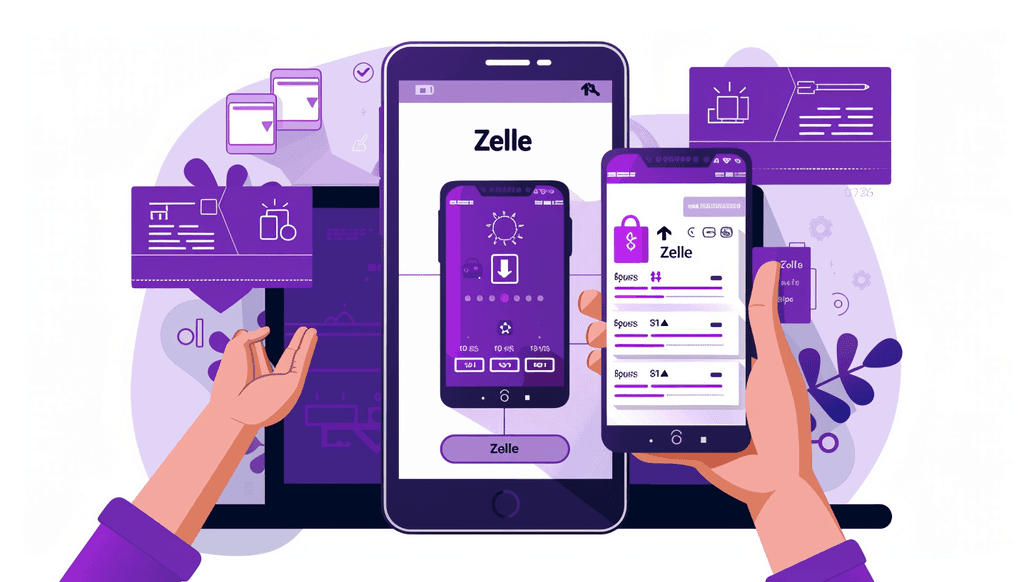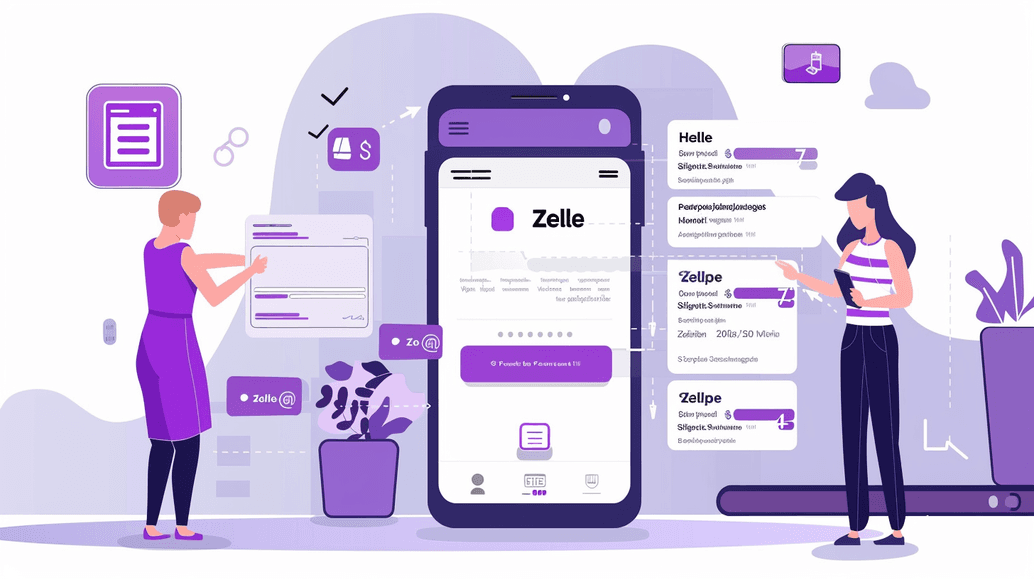Zelle Transfer Limits: Everything You Need to Know

Zelle is a popular app that offers a quick and convenient way to transfer funds. This leading peer-to-peer payment platform allows users to send and receive money with just a few taps on their smartphones or clicks on their computers.
Like any financial service, though, Zelle has its own set of rules and limitations, particularly when it comes to the amount of money you can transfer within a specific time frame. Unless you pay attention to the Zelle transfer limit, you risk encountering unexpected restrictions and delays. Such limits are established by the banks to prevent fraud and manage large-scale transfers.
In this guide, we’ll break down how limits on Zelle transfers work and what factors influence them. We’ll navigate you through the actual restrictions the platform sets and help you never face unexpected restrictions again.
Sending and Receiving Money With Zelle: Current Limits

Zelle makes life easier, saving the time and effort previously required to complete money transfers. Zelle transaction limit exists to make the service possible, as otherwise it will quickly get overwhelmed and rendered inaccessible.
By and large, this payment platform acts as a kind of mediator that expedites and facilitates money transfers between individuals and businesses. Initially established as a P2P payment service for personal transfers, it is also available for business transfers today, which is another reason for placing reasonable limits on transaction amounts.
When it comes to Zelle maximum transfer per day, the amount you can send and receive or request via this P2P service is determined by your bank. If your bank or credit union doesn’t have a Zelle partnership, you can add any Visa or Mastercard debit card you have to the app. In this case, you’ll be limited to sending up to $500 and receiving up to $5,000 per week.
Zelle Limits per Day by Bank
What is the maximum Zelle transfer per day? It all depends on what bank you use.
Bank | Zelle Daily Limit | Zelle Monthly Limit |
|---|---|---|
Bank of America |
|
|
Wells Fargo | $3,500 | $20,000 |
Citibank |
|
|
Capital One | $2,500 | No limits |
Chase | Up to $10,000 for individuals Up to $15,000 for SMBs | Not specified |
Factors Impacting Zelle Transfer Limit
As you can see, the Zelle daily limit varies across the US financial institutions. Normally, banks consider the following factors when establishing limits for different accounts:
- Your transaction history, including the frequency and size of previous transfers. Banks may adjust your set limits at their sole discretion based on your account activity and financial behavior.
- Whether your bank account is verified or not. Banks may be more willing to increase limits for verified accounts with a proven track record of responsible use.
- Bank Policy. Each US bank has its own set of policies regarding Zelle transfer limit, which can vary widely. Some banks may offer higher limits to preferred or premium account holders, while others may impose stricter limitations for security purposes.
Changing Zelle Transfer Limits: What to Watch For

At some point, there may come a time when you need to adjust your transfer limits to accommodate larger transactions or meet specific financial needs. To be clear, if your financial institution doesn’t support direct Zelle payments, you won’t be able to increase or decrease your limits in the app.
If that’s not the case, you can contact your bank or credit union directly to request an adjustment of your Zelle transfer limit. This typically involves speaking with a customer service representative or submitting a request through online banking.
Some banks may offer higher transfer limits as part of premium or upgraded account packages. By upgrading your account, you can also gain access to other benefits, such as waived fees or enhanced security features.
However, when seeking to further bump up your Zelle instant transfer limit, you should remember about the security risks, as larger transactions may attract more attention from fraudsters. Besides, monitor your account balance carefully and ensure you have sufficient funds to cover any outgoing transfers to avoid overdraft fees.
How to Avoid Restrictions on Zelle Transfers
- Verify Your Identity: Verified accounts with a solid track record tend to enjoy a higher Zelle daily limit.
- Monitor Your Account Activity: Keep a close eye on your account activity and transaction history to avoid triggering any suspicious activity alerts. Be mindful of your daily and monthly transfer limits, plan your transactions accordingly, and practice responsible account use.
- Use Alternative Payment Methods: For larger transactions, you can use other payment systems, such as Venmo or PayPal, which offer higher transfer limits. For even more flexibility, you can also use wire transfers or electronic bill payments.
Final Thought
Zelle is an excellent tool for instant transfers between individuals and businesses. To get the most out of this payment service, you should be aware of the Zelle transaction limit that varies across financial institutions. To learn more about this system, you can visit the app’s official website. To find out your current Zelle limits, check your banking app.




